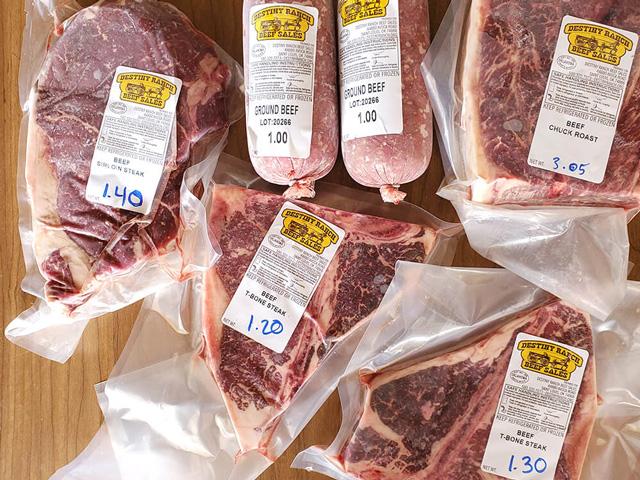Consumer Direct Beef Sales
Five Questions to Answer Before Selling Beef Direct to Consumers
William and Karen Payne have always had ranching in their blood. They've worked 9-to-5 jobs to support their love of the business but found a way to make it a full-time job after they began to sell their homegrown beef consumer direct.
In 2006, the Paynes began producing beef at their Oklahoma place, Destiny Ranch, using what they describe as a "regenerative" approach. It's worked for the couple, and today William encourages others to consider it, taking into account five questions he says will help put the endeavor into perspective.
1. How do I want to sell my beef?
William says that after starting with stockers and being disappointed in their inability to control quality, yield or grade, they transitioned to growing all their own beef. They also had to consider how much beef the average consumer could buy at one time.
P[L1] D[0x0] M[300x250] OOP[F] ADUNIT[] T[]
"For us, selling 1 pound at a time was the name of the game," William said in a report from the Noble Research Institute. "That was the thing that broke the whole thing open. It was just incredible."
2. Where will I get my beef processed?
William noted this is a real challenge in many areas and that producers must think about whether they intend to sell locally or out of state as well. Because he only wanted to sell his beef in person in his home state of Oklahoma, he wasn't bound to a USDA-inspected plant and could go with a state-inspected facility.
3. Where do I sell my beef?
Marketing is big, and William said he rents out parking lot spaces and sells out of a trailer. Other producers have had success with e-commerce sites and farmers markets.
4. Who will make up my customer base?
The Paynes learned quickly their customers wanted to learn about their beef and the ranch it comes from. Communicating that became a priority. They tell buyers about the ranch, and its regenerative practices. Last year, they even invited customers out to see the property and have a beef meal.
William said producers have to meet consumers where they are and use the opportunity to tell a positive story about the beef industry.
5. How do I make my beef stand out?
As the popularity of direct-to-consumer beef sales grows, there is more competition, and it's important for a ranch to be able to talk about what makes their product different.
The Paynes believe that packaging and presentation go a long way. "No doubt the quality of the beef is the most important thing," said William. "But they won't see how good it tastes if it doesn't look good on display. It has to be laid out properly and your meat cutters play a big part in your success."
For more information on regenerative grazing, or to see this article by Noble Research Institute's Katrina Huffstutler in its entirety go to: www.noble.org.
(c) Copyright 2022 DTN, LLC. All rights reserved.






